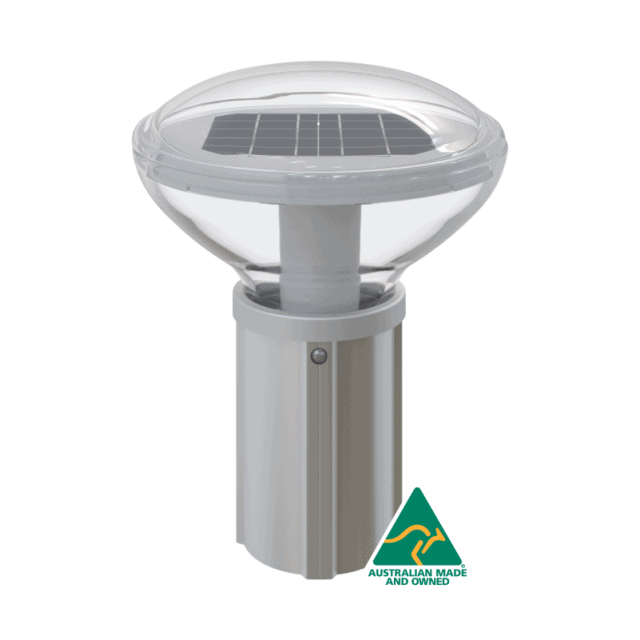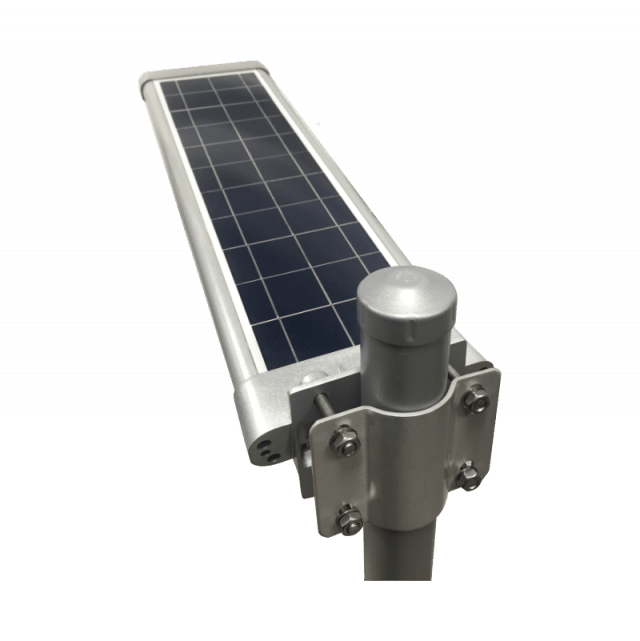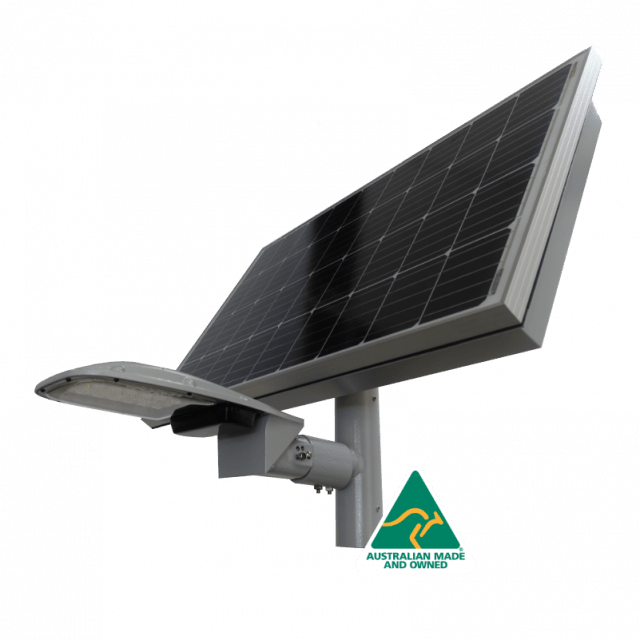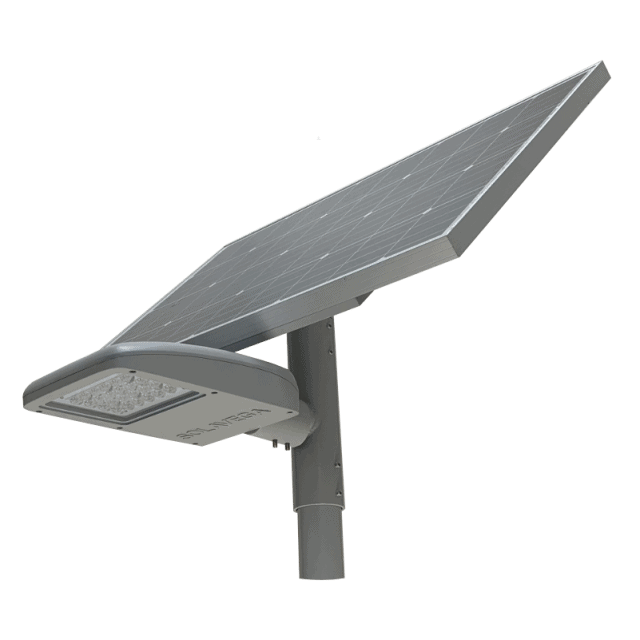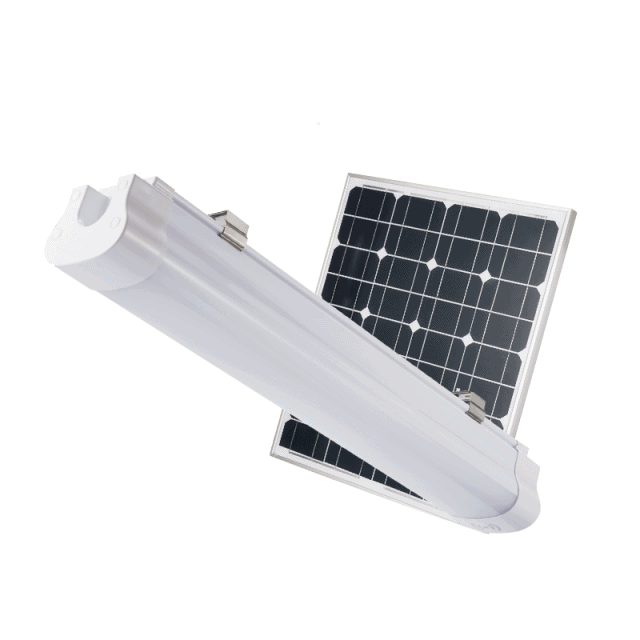Industrial-grade Australian Solar Bollard Lights that Work in the Shade!
The key to effective solar is being able to match the amount of energy coming in from the sun, with the energy emitted (as light) from the solar bollard (or any solar light for that matter!).
One of the reasons the SOLABOLLARD can offer a 5-year (SBL1) and 10-year (SBL2) warranty on performance is because every solar bollard bought is prescribed a power model to match the position the solar bollard will be installed.
To prescribe the correct power model, customers commonly provide a street address, with a map, sketch, or plan of the area they are wanting to light. HIGHLUX can then asses the amount of power from the sun to that exact location, coupled with a description of shading the area from our customer, including, height and type of trees, buildings or fencing. Taken together, this information is sufficient to prescribe the correct power model of solar bollard to meet the customer’s vision (& budget) for the lighting project.
We know the sun is "stronger" in the northern parts of Australia compared with the southern states - this of course has implications for solar lighting. Knowing the location a customer is going to install solar is the fist step to choosing the right solar lighting solution, and, for the solar bollard, which power model will achieve the warranty-supported "dusk to dawn 365 days a year". The power model is selected based on the sun's path in the proposed installation position over the winter months.
The “winter months” is used because winter gives a “worst case scenario”: the highest amount of solar energy the bollard will capture with the shorter daylight hours – to best match the amount of energy from the sun in the worst case scenario to the energy emitted.
As a general rule, the northern locations would suit a power model of solar bollard at or above 160mA (160mA is considered "standard"). Conversely, the southern locations of Australia would suit a power model of solar bollard at or below 160mA. The split between north and south with 160mA as the point of differentiation is a guide only, but a reasonable starting point when you are making decisions about solar bollard lighting for your project.
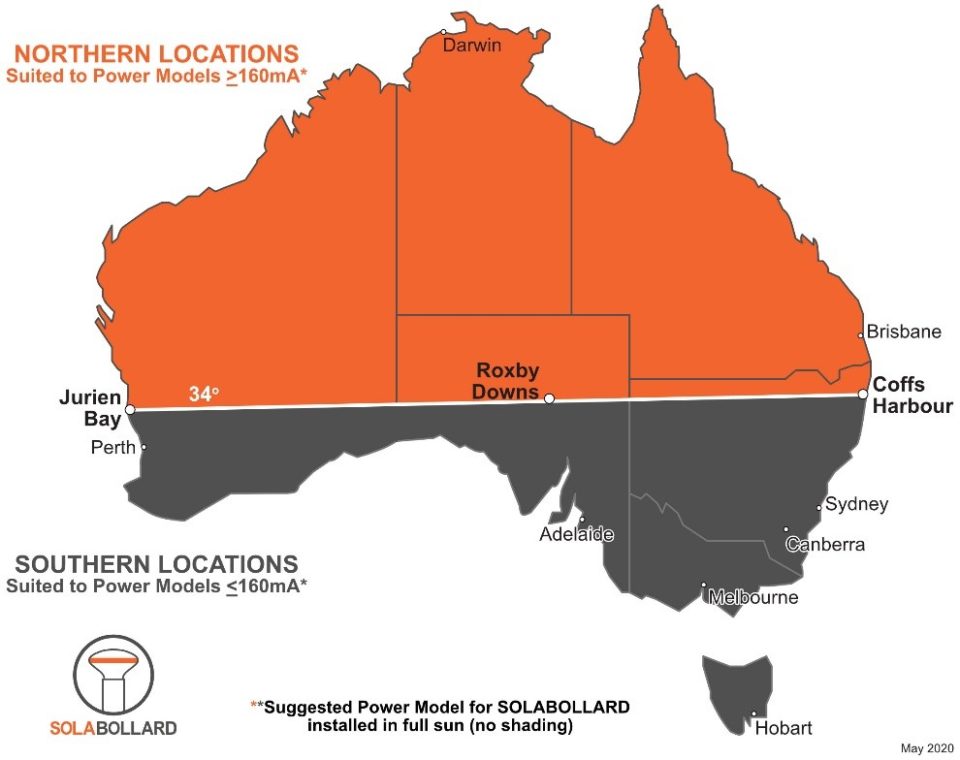
In the map shown above, the white line separating the northern part of Australia from the southern part, cutting from Jurien Bay in WA, through Roxby Downs in SA, across to Coffs Harbour in NSW, is known as the 34th parallel south – 34 degrees south of the equator. Areas above the line receive more heat from the sun (being closer to the equator - northern states), with areas below the line with less heat (southern states).
Prescribing the correct power model is how SOLABOLLARD is able to run at full power, dusk to dawn, 365 days through winter, and, with shade.
Here is a more detailed guide on solar bollard power models:

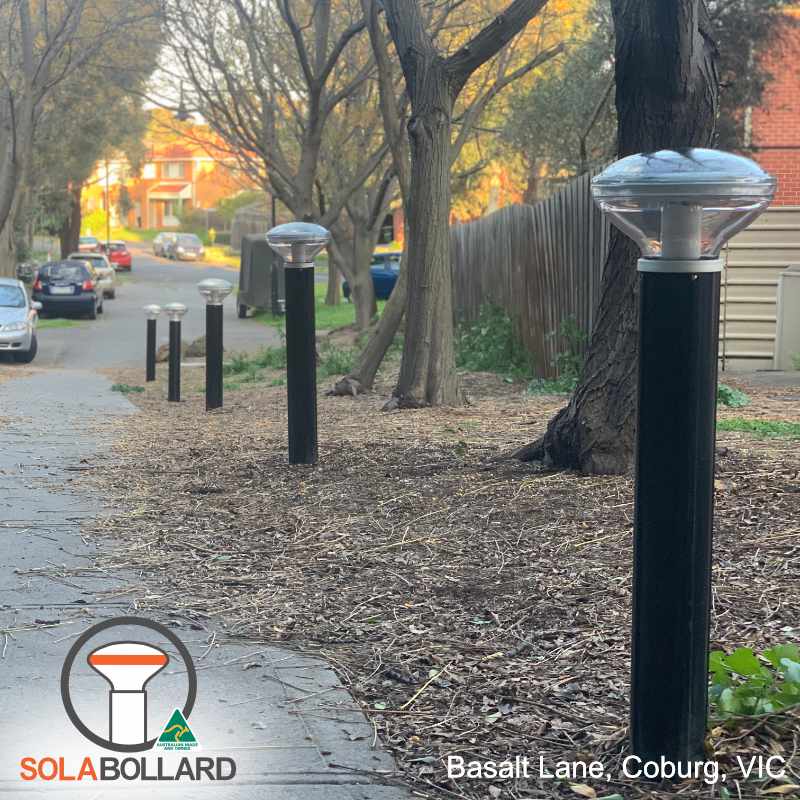
In the photo on the left is an installation of Solar Bollard Gen 2, in a pedestrian access way (PAW) in Coburg, an inner city suburb of Melbourne in Victoria. You can see the PAW is flanked by rows of deciduous trees, fence lines, and residential housing - these will all affect the amount of sun to these bollards with the shadowing of the fence and houses being a full blocking of the sun compared with the dappled sunlight through trees.
The photo is taken in winter when the leaves have fallen from the trees so it appears a little more open [to the sun]. While the sun is stronger, and travels higher up in the sky through the other seasons, the foliage on the trees is back, and creates a heavy cover over the bollards.
HIGHLUX specified a 40mA power model for this installation, at ~6m spacing, to achieve the AS/NZS pedestrian category lighting required by Council.
Model in the photo is Solar Bollard Gen 2, 40mA power (low power to account for shading to site), asymmetric LED arrangement, 1m installed height, direct bury installed, marine-grade aluminium black powder coated poles.
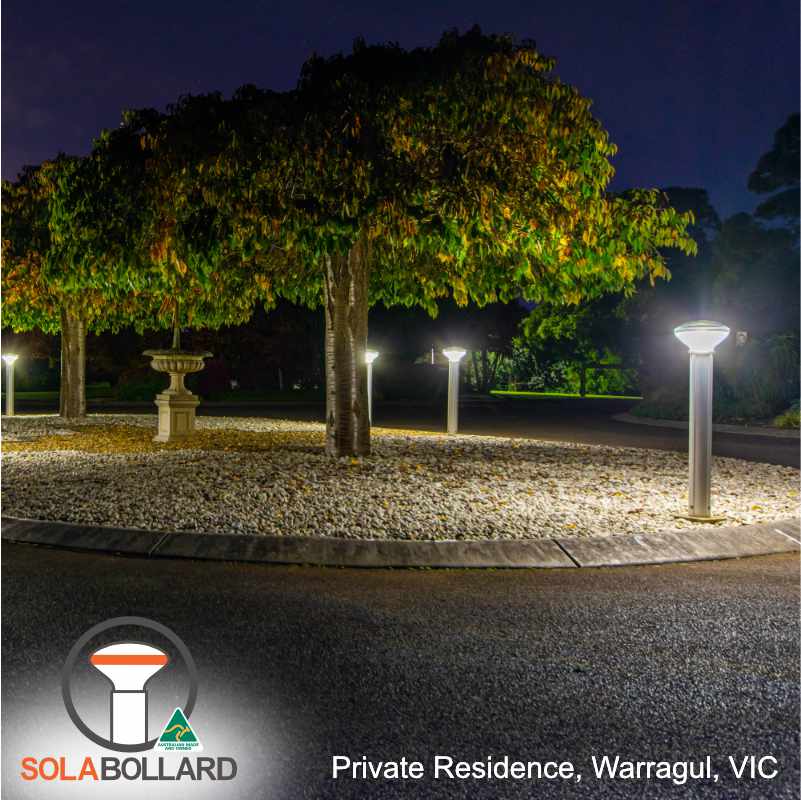
In the photo at right is an installation also in a suburb of Melbourne. These are the Solar Bollard Gen 1, installed in a set of nine, in the entrance of a residential property.
This installation was specified for 160mA power because these bollards will get full sun through winter - they are installed in positions where there is no shading over the bollards from the north, and are therefore able to catch the sun's full path.
The 160mA power is referred to as "standard power", and is the highest power level we would specify for all areas south of the 34th Parallel such as Victoria, Tasmania, much of South Australia, the lower parts of Western Australia, and most of New South Wales.
Model in the photo is the Solar Bollard Gen 1, 160mA power (standard power for full sun in winter for the region), 1m installed height, base-plate mounted, marine grade aluminium, anodised pole (silver).
There are two generations of solar bollard, solar bollard generation 1 (SBL1) and solar bollard generation 2 (SBL2). Read more about the differences between the two generations here.
If there is medium or heavy shading, SBL2 is the better choice than the SBL1. What makes the SBL2 a more effective solar bollard even with shade is its ability to put out a uniform light splay, even where the "power is turned down". This second generation of solar bollard was specifically designed and built to meet market demand (mostly from councils) to extend solar's capacity in open public areas (where there is often considerable shade). This demand for "solar that works in the shade" led to a change in the design from SBL1 to SBL2 in the way the LED are placed inside the bollard. In the SBL2, the LEDs are at the top pointing down, which means the light output is well directed downward (uniform), so the pathway illumination is optimised (even where the power input is turned down). Of course the lower power does mean an overall "less bright light output compared with the high power models" but this is mitigated by placing the bollards a little closer together than for the higher power models.
What power models are available for solar bollard?
The SBL2 has more options for power models, which also makes it the better choice over SBL1 where shading is a challenge at the installation site. SBL2 is available in ultra-low power model of 040mA, very low 080, low 120, standard power 160, high 180, very high 200, and ultra high 240mA. Compared with SBL1 which has it's lowest power model of 80mA, up to the highest at 200mA.
Choosing the correct power model is tied to the solar bollard's warranty. For example, if the solar bollard was installed in a position where there was no shading at time of purchase, but later, big trees grew and the power model wasn’t able to cope with shade, the warranty cannot be honoured. In the [almost] 10 years HIGHLUX has been selling the SOLABOLLARD, such a scenario is rare because of how much support our customers get (or already know!) when they come to us for solar solutions. Either way, getting the right power model for the job is important, and is what HIGHLUX is good at.

